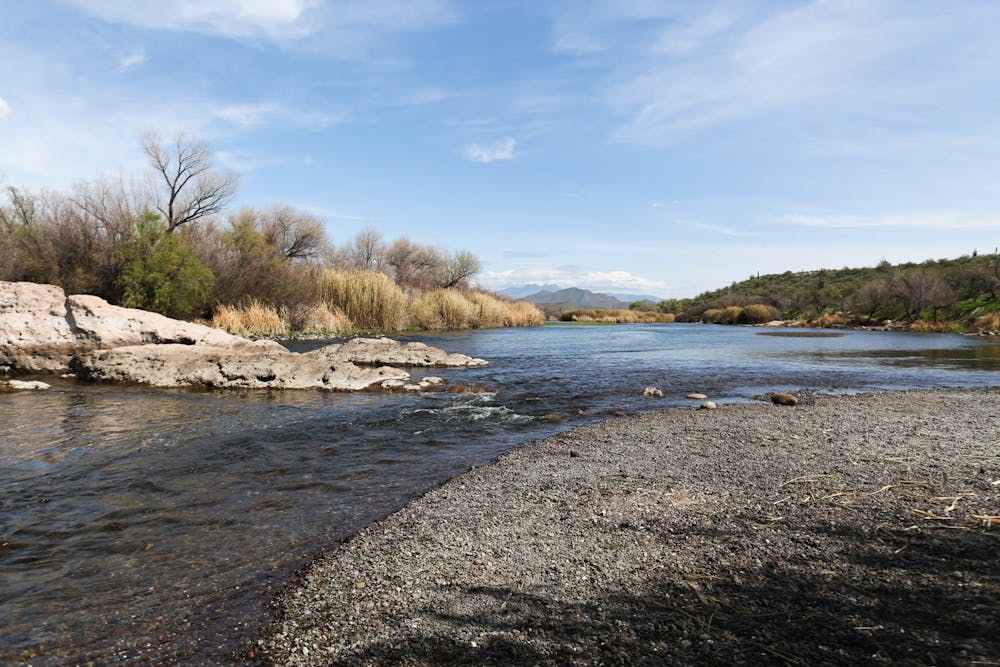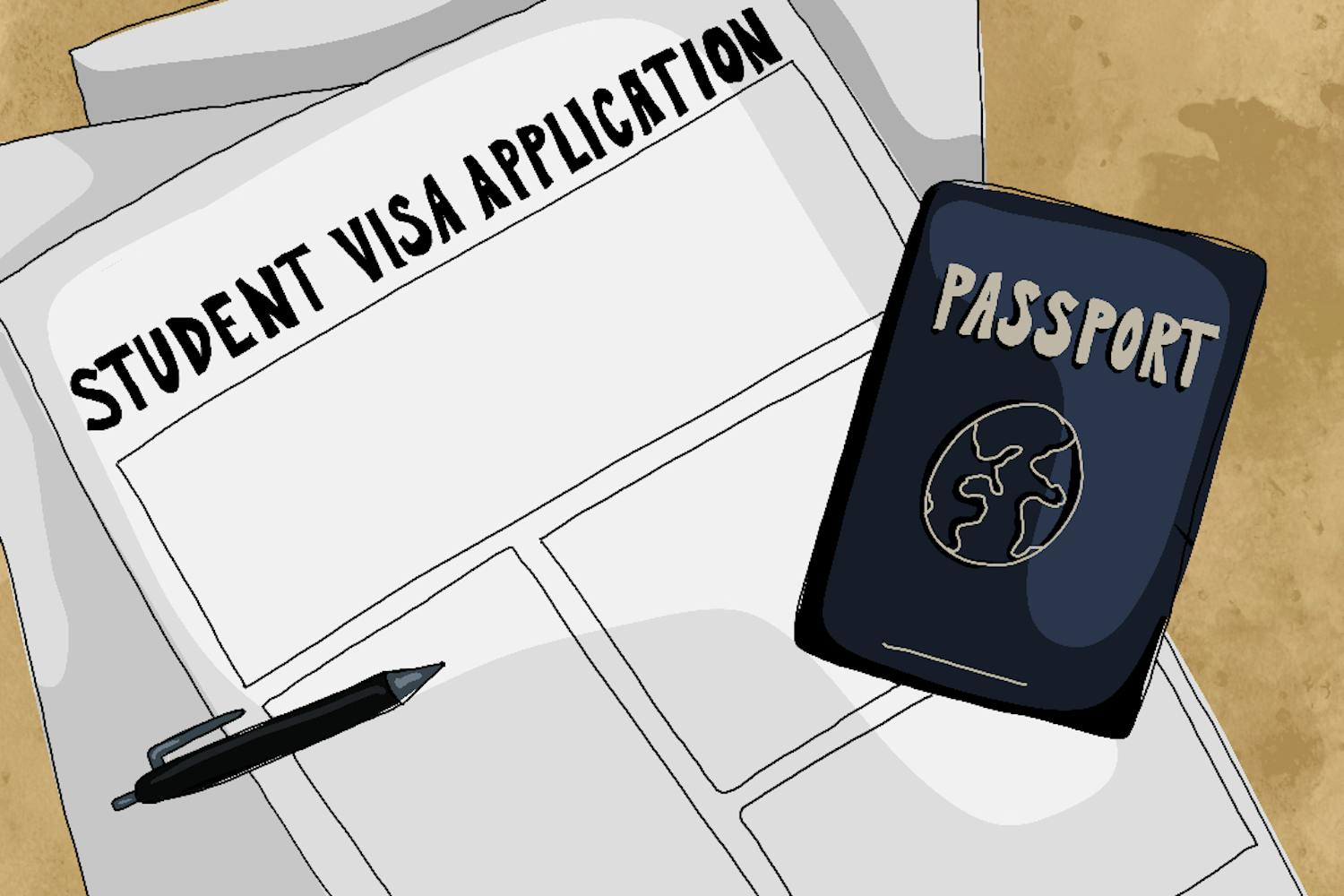In an initiative set to start on March 1, the Southwest Sustainability & Innovation Engine (SWSIE), led by ASU, is taking a significant leap towards fostering economic growth across the region in the field of sustainability.
The ambitious endeavor, funded by a $15 million grant from the National Science Foundation, aims to holistically tackle the complex intersection of energy, water and workforce development.
By integrating these critical areas, SWSIE hopes to drive sustainable practices that will not only enhance the economic vitality of the Southwest but also address pressing environmental challenges such as climate change, water scarcity and energy efficiency.
Organizational Structure
Peter Schlosser is the interim CEO of the Southwest Engine. He works towards linking industry with academia, promoting collaboration between the two sectors.
"It is a somewhat complex structure because the topic in itself is broadly based. We're not just looking at energy or water or workforce development, we are looking at how all these things are playing together," Schlosser said.
SWSIE is comprised of many partners across public and private sectors, all with individual promises to improve their sustainability and career development.
Diane Pataki is the deputy CEO of the Southwest Engine, and is one of the leaders who wrote and submitted the proposal to the NSF and is also heavily involved in the structuring of the organization.
"The engine is a consortium of about 50 different organizations, and three of them are large universities," Pataki said. "There's ASU, there's the University of Utah, and there's the University of Nevada, Las Vegas."
The large collection of organizations taking part in the project exemplifies a strategic alignment of educational institutions and other entities.
"One part of the engine's activity will be to work collectively," Schlosser said. "Insights will help to allow economic growth, but also then look at specific measures and specific projects that can lead to enhancement for economic growth. On our side, (we can) provide a workforce that then can actually drive that."
Pressing environmental concerns specific to the Southwest, such as increased heat and decreased water availability, are central to the collaborative effort.
"In many ways, their (goals are) the same. But then there are also differences. Clearly, what binds us together is the concern about the pressure on the region in terms of climate — more heat, less water," Schlosser said.
This shared concern extends to operational efficiencies and environmental impact mitigation, with companies recognizing the critical need for improved water efficiency and carbon footprint reduction.
Plans for the engine's projects and structure will be assessed by the NSF in two years, after which they could be eligible for $160 million over 10 years.
"We have evaluators, (and) the National Science Foundation has their evaluators. So they are measuring us against our own goals," Schlosser said.
Scott Barclay is the chief operating officer of SWSIE, and he has been involved in the project since ASU began developing the proposal. He discussed how the unique organization of ASU within the engine can lead to innovation in the public and private sectors.
"We hear from our partners that ASU is almost uniquely situated, that we have many of the researchers, we have a Global Futures Lab, and we also are very good at creating alliances across a large regional space," Barclay said. "(NSF) thought that we could bring together, and bring to the table, partners that other people could not in this area."
Economic Goals
Ultimately, many of the goals of the engine relate to economics. In an ideal form, Barclay expects the markets to regulate and promote the sustainable innovations coming out of the Southwest, creating local job opportunities.
"If we can get (technology) into the markets, then the markets will handle the shift into the larger culture, and they will generate the ideas around it and the support that's needed," Barclay said. "Then they'll also employ the local workforce. They'll engage the local population."
An area for future interest is the ownership of technology and intellectual property (IP) after its development, but the engine seeks to address this with contractual agreements and collaborative understanding between all parties involved.
"Often, what we do is we license IP, but I anticipate that, especially as we are going deeper into the working of the engine, that we will jointly develop IP," Schlosser said. "Then we just have to contractually agree upon how we are actually going through that."
Carbon, Water and Energies
According to Pataki, carbon, water and energies are the three focus areas of the engine, aligning with the collective environmental goals of the region.
To build inviting collaborations, ASU is establishing itself as a meeting space for the engine, where partners can build the soft relationships that lead to more concrete projects.
"One of the things the engine is starting to do is set up convenings around these topics," Barclay said. "You actually bring the partners together so that the people in water can see what's coming out in energy, and so that the people in energy can see where water is going."
"There's also research in two other areas, one of which is about visioning and roadmapping for the region," Pataki said. "The idea is to be able to work with a lot of different partners all across the region, and see if we can come to a consensus on what our vision is 10 years from now in the Southwest."
This collaborative effort is crucial for setting long-term goals and strategies that align with the region's unique challenges and opportunities.
"Our goal is to collaborate, to co-produce new knowledge between academia and industry," Pataki said. "We put teams together of faculty and students on the academic side, and people from industry or other sectors could meet people from the nonprofit sector or from the government sector, and we want them to collaborate on solutions."
The engine is currently focused on mapping a road to follow later.
"The engine itself will have a governance structure and policies. Actually, that's one of the things we're working on in the next few months — on the policies and procedures for how the engine operates," Pataki said. "The first ($15 million) award (is) for two years. So we're going to spend the first year doing strategic planning and building the engine."
The focus on water, particularly vital for Arizona, is aligned with the broader objective of integrating sustainability into the fabric of regional development, an effort led by Paul Westerhoff, a regents professor at ASU's School of Sustainable Engineering and the Built Environment.
Regulations are a primary concern regarding water, especially when it comes to unique collection methods.
"Atmospheric water … it's not really regulated," Westerhoff said. "It doesn't even have, like, a legal term. Who owns atmospheric water?"
This brings attention to the need for regulatory frameworks that can keep pace with technological advancements and the novel challenges they present. The initiative not only serves as proof of concept, but also creates educational tools for bringing theoretical ideas into the real world.
"Right now, if you go over on the east side of (ASU's Tempe) campus by the bus stop, you'll see this big thing called carbon capture," Westerhoff said. "It looks like a tree that goes up and down there, capturing carbon dioxide."
This project is one of several that will be expanded through the engine.
Student Opportunities
The engine and its investments are not just for technology, but also to funnel students into quality jobs in sustainable industries.
Sharon Hall is the associate dean for student success at the College of Global Futures. Much of the engine's activity will be run out of the Julie Ann Wrigley Global Futures Laboratory which houses the college.
This means the engine is set to expand the career development services of the College of Global Futures for both students seeking a degree within the college and from other programs.
"We're excited to connect (SWSIE) to our College of Global Futures career services team," Hall said. "(Our) mission is to empower students and alumni to actualize successful, fulfilling and impactful careers that contribute positively to global futures."
The main offering of CGF career services is connecting students to internships and mentorships to gain real-world career experience.
"Sometimes there is a gap between what students learn in classrooms and actually what is needed to be a changemaker in the world," Hall said. "One way to (address) this is by pairing students with professional mentors."
As the engine kicks off, the expansion of the career services will start by adding new opportunities to connect with students.
"In this first year, we'll start to make connections to our community partners, including community colleges and other universities," Hall said.
Partnerships
ASU contributions and programs are just one small piece of what the engine seeks to bring to the Southwest. The engine also includes industry partnerships, research institutions, nonprofits and city governments. These partners all have their own initiatives and goals to improve their own sustainability practices or contribute to other partners' projects.
SWSIE is expected to help build these relationships, but the tangible benefits might not be immediately associated with the engine's work.
"If SWSIE does its job, we will be doing much of the work behind the scenes. (A new) job will be brought by this new company that's doing exciting things, and we helped that company come together," Barclay said.
For example, in Arizona, the Salt River Project, a utility company, aims to address gaps in sustainable technology. They hope to improve the development of long duration energy storage for solar power. Addressing this issue could improve large-scale adoption across the supply chain.
Also in Arizona is the SciTech Institute, the leader of STEM ecosystems in the state. The Arizona STEM ecosystem is a network of educational opportunities that already exists within the state. As a partner of the engine, the SciTech Institute is working to expand their youth STEM ambassador program and increase their career visibility events.
These are just two of the many partners in the engine, all seeking to use the NSF investment to use the work that has already been done in the sustainability field to create more opportunities for people in the region.
Next for SWSIE is the appointment of a permanent CEO who aligns with NSF guidelines. According to Pataki, this individual will be sourced from the industry and will possess an economic background geared toward management of the engine's financial aspects.
The Southwest Sustainability & Innovation Engine is a pivotal initiative for all involved – from involved engineers and scientists to local communities and industries — as they collaboratively embark on the journey towards a more resilient and prosperous Southwest.
Edited by River Graziano, Sadie Buggle and Grace Copperthite.
Reach the reporters at dmanatou@asu.edu and syramir2@asu.edu and follow @nerdyoso on X.
Like The State Press on Facebook and follow @statepress on X.
Correction: The title of the School for the Future of Innovation in Society was updated to the correct name as School of Sustainable Engineering and the Built Environment at 1:13 PM on 2/29/2024.
Sophia is a senior studying biological sciences. This is her fifth semester with The State Press. She has also worked as a science and technology reporter.
Dimitra is a junior studying biomedical engineering and physics. This is her second semester with The State Press. She has also worked as a research assistant in Kirian Lab.




